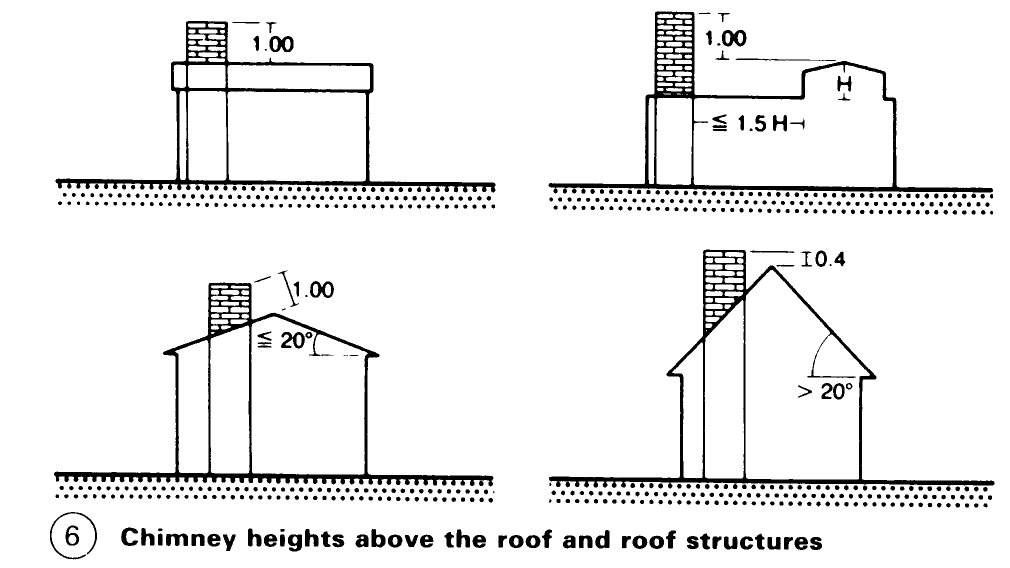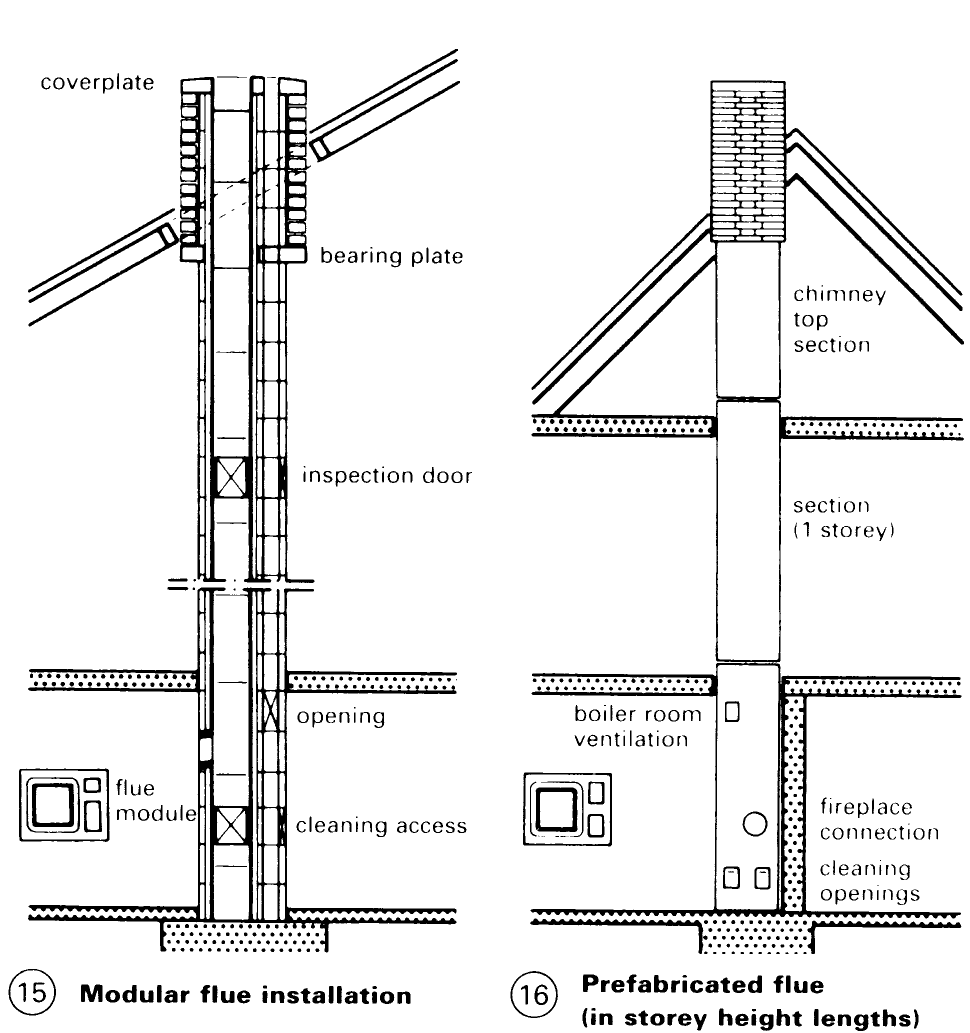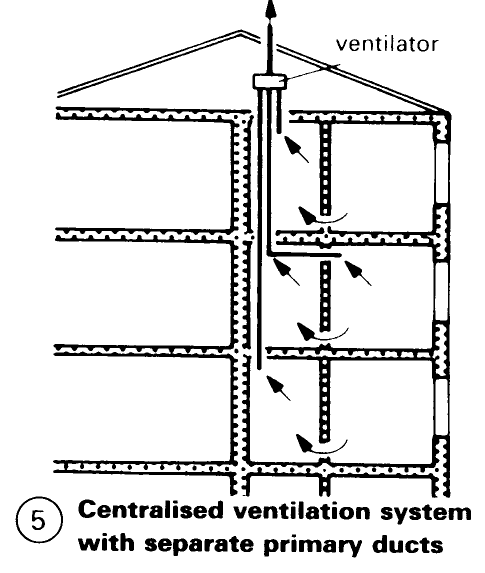Chimneys and Flues. Ventilation Ducting
Flues and chimneys are ducts in and on buildings, which are intended exclusively to convey the gases from fireplaces to the outside over the roof. The following should be connected to a flue: fireplaces with a nominal heat output of more than 20kW; gas fire places with more than 30kW; every fireplace in buildings with more than five full storeys; every open fire and forge fire; fireplaces with a means of opening and every fireplace with a burner and fan.
Provision should be made in the foundation plans to support the weight of the fireplace, flue and chimney. Flues must have circular or rectangular internal cross-sections. The cross-section must be > 100cm2, with a shortest side of 100mm. Brick flues must have a shortest internal side of length > 135mm, the longer side must not exceed 1.5 times the length of the shorter. The shortest effective flue height > 4m; for gaseous fuels > 4m. The mouth of the chimney should be > 400mm above the apex of the roof, where the roof slope is greater than 20° and for roof slopes less than 20° this dimension is > 1 m - (6).

Where chimneys are closer to structures on the roof than between 1.5 and 3 times the height of the structure, it must be ensured that they clear the structure by at least 1 m. Where the mouth of a chimney is above a roof which has a parapet which is not closed on all four sides, it must be at least 1 m above the parapet. Every flue must have a > 100mm wide by > 180mm high cleaning opening which is at least 200mm lower than the lowest fireplace connection. Chimneys which cannot be cleaned from the mouth opening, must have an additional cleaning opening in the flue in the roof space or in the chimney above the roof. The following materials may be used for single skin flues: light concrete blocks, clay bricks, lime sandstone -solid bricks, foundry bricks.

Materials for treble-skinned chimneys, with outer casing, insulation layer and moveable inner lining can be formed components in light concrete or fireclay for the inner lining; for the outer casing, formed components in light concrete, masonry stone, bricks with vertical perforations, lime sandstone, foundry bricks, or aerated concrete blocks. For the insulating layer, noncombustible insulating material must be used. Exposed outer surfaces of the chimney in the roof space should be provided with a rough cast finish of at least 5-10mm thickness. Flue walls must not be loadbearing. The chimney can be clad with slates, shingle slates or cement fibre sheets. Zinc or copper sheet can be fixed to the chimney on to the sub-structure using dowels (not wooden dowels). Prefabricated claddings are recommended.
Ventilation Ducting. Extract fan units should meet the ventilation requirements of bathrooms and lavatories in residential and nonresidential buildings (such as schools, hotels and guest houses) and extract air from one or several rooms into an extract duct – (1) – (2). Ventilation systems should be sized for a minimum of 4 complete changes of air in the rooms which need to be ventilated. A flow of 60m3/h is adequate for bathrooms with a toilet and a flow of 30 m3/h is adequate for one toilet. Every internally sited room to be ventilated must have a non-closable ventilation opening. The size of the area through which air flows must be 100 mm2 for every m3 of room volume. Gaps around the door may be taken as equivalent to 250mm2. In bathrooms, the temperature must not fall below 22°C, due to the flow of air.

The velocity of flow in the living area should be > 0.2 m/s. The exhausted air must be led outside. Each individual ventilation system must have its own main duct - (3)-(5).


Central ventilation systems have common main ducting for a number of living areas (4)-(6).

The effective functioning of branching duct convection ventilation systems depends essentially on the available cross-section area of duct available per connection (9). The cross-section of the ventilation shaft for single-duct systems without mechanical extract – (7) in bathrooms and WCs without open windows (up to 8 storeys) should be 1500mm2 per room.

Date added: 2023-01-01; views: 727;
